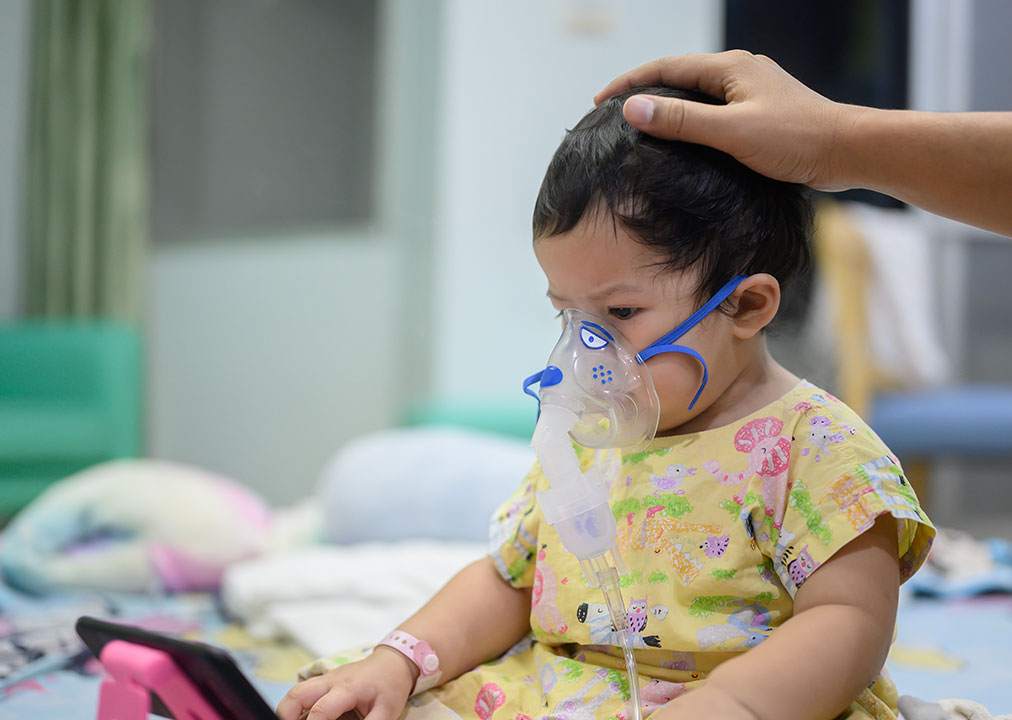Rights groups condemn Taliban’s arrests of women as ‘assault on human dignity’ – Amu TV

Report on Human Rights Violations in Kabul and Contradictions with Sustainable Development Goals
Executive Summary
Recent actions by the Taliban in Kabul, involving a widespread campaign of arrests targeting women, represent a severe regression in human rights and a direct contravention of multiple Sustainable Development Goals (SDGs). This report details the nature of these violations, as reported by women’s rights organizations, and analyzes their impact on the progress toward SDG 5 (Gender Equality), SDG 16 (Peace, Justice and Strong Institutions), and SDG 8 (Decent Work and Economic Growth). The international community’s role, as invoked by activists, is also examined in the context of SDG 17 (Partnerships for the Goals).
Systematic Repression and the Reversal of SDG 5: Gender Equality
The recent detentions are described by activists as a systematic effort to erase women from public life, fundamentally undermining the core principles of SDG 5.
- Violation of Target 5.1: The arrests, often based on women’s attire or suspicion of future dissent, constitute a severe form of gender-based discrimination, directly opposing the goal to “end all forms of discrimination against all women and girls everywhere.”
- Violation of Target 5.2: The physical handling of women during arrests and their arbitrary detention are forms of public and private violence, contradicting the goal to “eliminate all forms of violence against all women and girls.”
- Violation of Target 5.5: By actively removing women from public spaces and suppressing their voices, the Taliban are dismantling any possibility for women’s “full and effective participation and equal opportunities for leadership at all levels of decision-making in political, economic and public life.”
The Voice of Afghan Women Movement stated that no regime has the right to strip half of society of its basic rights, labeling the systematic removal of women as “inhumane.”
Erosion of Justice and Strong Institutions (SDG 16)
The methodology of the arrests points to a complete breakdown of the rule of law, a cornerstone of SDG 16, which seeks to promote peaceful and inclusive societies and provide access to justice for all.
Key Violations of SDG 16 Principles:
- Lack of Due Process: Detentions are reportedly carried out without court orders or legal justification, violating Target 16.3, which aims to “promote the rule of law at the national and international levels and ensure equal access to justice for all.”
- Absence of Accountable Institutions: The arbitrary actions demonstrate a lack of accountable and transparent institutions, a central theme of SDG 16.
- Breach of International Law: Activist groups confirm that these actions violate international agreements, including the International Covenant on Civil and Political Rights (ICCPR), undermining the global legal frameworks that SDG 16 seeks to strengthen.
The Afghan Women’s Movement in Exile highlighted that families are not notified of the detentions, further compounding the violation of legal and human rights principles.
Economic Disenfranchisement and Contradiction of SDG 8
The crackdown extends to the economic sphere, directly impacting women’s ability to participate in the economy and achieve financial independence, which is contrary to the objectives of SDG 8 (Decent Work and Economic Growth).
- Targeting Women’s Businesses: A reported raid on a secret women’s beauty salon in Dasht-e-Barchi illustrates the suppression of female entrepreneurship.
- Undermining Target 8.5: These actions prevent women from achieving “full and productive employment and decent work,” thereby increasing gender inequality in the labor market.
Call for International Partnership and Accountability (SDG 17)
In response to the crisis, women’s rights groups have issued a formal call to the international community, invoking the spirit of global partnership for sustainable development as outlined in SDG 17.
Recommendations Presented to the International Community:
- Immediate Action: A demand for immediate and enforceable action from the United Nations, the Human Rights Council, and human rights-supporting governments.
- Fact-Finding Mission: The formation of an international fact-finding mission to investigate arbitrary detentions and human rights abuses across Afghanistan.
- Targeted Sanctions: The imposition of targeted sanctions against Taliban leaders responsible for rights violations.
- Suspension of Financial Support: A call to suspend foreign financial support to regimes that systematically violate women’s rights, ensuring that global partnerships do not enable human rights abuses.
Analysis of SDGs, Targets, and Indicators
1. Which SDGs are addressed or connected to the issues highlighted in the article?
-
SDG 5: Gender Equality
This goal is central to the article, which focuses on the “systematic effort to erase women from public life” in Afghanistan. The text details the arrests of women, the violation of their rights, and the specific targeting of women for their clothing or for fear they might protest. The entire narrative revolves around the severe discrimination and oppression faced by women, directly contravening the aim of achieving gender equality and empowering all women and girls.
-
SDG 16: Peace, Justice and Strong Institutions
The article highlights a complete breakdown of justice and the rule of law. It mentions that detentions are “carried out without court orders or family notification,” which is a “clear violation of international human rights laws.” The call for an “international fact-finding mission to investigate human rights violations and arbitrary detentions” points to the absence of just and accountable institutions within the country. The actions described represent a failure to promote peaceful and inclusive societies and provide access to justice for all.
-
SDG 17: Partnerships for the Goals
This goal is addressed through the explicit calls to action directed at the global community. The women’s groups urge “the international community — including the United Nations, the Human Rights Council, and human rights–supporting governments — to take immediate and enforceable action.” This appeal for international cooperation, targeted sanctions, and the formation of a fact-finding mission embodies the spirit of partnership required to address global challenges like human rights violations.
2. What specific targets under those SDGs can be identified based on the article’s content?
-
Target 5.1: End all forms of discrimination against all women and girls everywhere.
The article directly addresses this target by describing the Taliban’s actions as a “systematic effort to erase women from public life” and a “systematic campaign to silence and erase Afghan women.” The arrests of women for their clothing are a clear example of institutionalized discrimination.
-
Target 5.2: Eliminate all forms of violence against all women and girls in the public and private spheres.
The “physical handling of women during arrests” and the “arbitrary detentions” described in the article are forms of physical and psychological violence perpetrated against women in the public sphere.
-
Target 16.3: Promote the rule of law at the national and international levels and ensure equal access to justice for all.
This target is relevant as the article explicitly states that detentions are conducted “without court orders or family notification,” indicating a lack of due process and a collapse of the rule of law. The victims have no access to justice.
-
Target 16.a: Strengthen relevant national institutions… to prevent violence and combat… crime.
The article shows a complete inversion of this target, where state-level actors (the Taliban) are the perpetrators of violence and arbitrary detentions, rather than the protectors of citizens’ rights. The call for an “international fact-finding mission” underscores the absence of trustworthy national institutions.
-
Target 17.16: Enhance the global partnership for sustainable development…
The call from women’s groups for the “United Nations, the Human Rights Council, and human rights–supporting governments” to intervene directly invokes the need for a global partnership to uphold human rights and sustainable development principles where they are being violated.
3. Are there any indicators mentioned or implied in the article that can be used to measure progress towards the identified targets?
-
Indicator 5.1.1: Whether or not legal frameworks are in place to promote, enforce and monitor equality and non-discrimination on the basis of sex.
The article implies a negative status for this indicator by stating the Taliban have “breached multiple international agreements, including the Convention on the Elimination of All Forms of Discrimination Against Women (CEDAW).” This shows a legal framework that is actively discriminatory rather than protective.
-
Indicator 16.3.2: Unsentenced detainees as a proportion of overall prison population.
The mention of “arbitrary detentions” and arrests “without court orders” directly points to the existence of unsentenced detainees. An increase in such arrests, as reported in the article, would be a direct measure of regression on this indicator.
-
Indicator 16.a.1: Existence of independent national human rights institutions in compliance with the Paris Principles.
The article strongly implies the non-existence of such institutions. The fact that Afghan women’s groups must appeal to the “international community” and the “United Nations” for a “fact-finding mission” indicates a complete lack of any independent national body to investigate or address human rights violations.
4. Summary Table of SDGs, Targets, and Indicators
| SDGs | Targets | Indicators |
|---|---|---|
| SDG 5: Gender Equality |
5.1: End all forms of discrimination against all women and girls everywhere.
5.2: Eliminate all forms of violence against all women and girls. |
5.1.1: Existence of legal frameworks to promote non-discrimination (the article notes the breach of CEDAW, indicating a negative status). |
| SDG 16: Peace, Justice and Strong Institutions |
16.3: Promote the rule of law and ensure equal access to justice for all.
16.a: Strengthen relevant national institutions to prevent violence. |
16.3.2: Unsentenced detainees as a proportion of the prison population (implied by “arbitrary detentions” without court orders).
16.a.1: Existence of independent national human rights institutions (implied to be non-existent by the call for international intervention). |
| SDG 17: Partnerships for the Goals | 17.16: Enhance the global partnership for sustainable development. | (No specific indicator mentioned, but the call for action from the UN, Human Rights Council, and other governments is a direct appeal for multi-stakeholder partnership). |
Source: amu.tv

What is Your Reaction?
 Like
0
Like
0
 Dislike
0
Dislike
0
 Love
0
Love
0
 Funny
0
Funny
0
 Angry
0
Angry
0
 Sad
0
Sad
0
 Wow
0
Wow
0











































































